Plus a Change, Plus Les Choses Sont Les Mmes
According to those renowned postmodern philosophers the Barenaked Ladies, “everything old is new again.” The maxim certainly applies to the automotive industry. Those of us who put ourselves in Moto-PR harm’s way are constantly bombarded by joyous claims of new and improved technology and the latest justgottahavit features: self-parking cars, adaptive cruise control, heated/cooled cup holders, etc. The truth is, many of the technological advancements we lust after are recycled ideas from days gone by. They may be “improved” but they definitely aren’t “new.”
As manufactures try to squeeze every inch per gallon out of engines that lower their CAFE ratings, variable displacement powerplants (a.k.a. “Displacement on Demand”) are the next big thing. Shutting down half the cylinders turns a powerful V8 into the world’s bulkiest four-cylinder, but saves enough fuel to salve the customer’s conscience and convince them that they’re doing something positive for the environment/America’s energy independence.
Back in ‘77, Ford developed an ill-fated version of their 300-cubic-inch truck engine that shut off three cylinders in cruising mode. In the early ‘80’s, GM’s infamous V-8-6-4 engine made it to market. Unfortunately, engine control technology wasn’t mature enough to handle the task efficiently and the idea died an ignominious death (along with the Cadillac models powered by GM’s variable displacement engine). Now that computer technology has caught up with the concept, we have engines that adapt to changing conditions faster than a White House press secretary.
GM was the first to offer another technological marvel infesting today’s high-priced luxobarges: menu-driven video screen control panels. Whether it’s called iDrive, COMAND, MMI or just plain aggravating, they’re all riffs on the Electronic Control Center (ECC) installed in Buick’s Reatta and Riviera in the late 80’s. The ECC touch screen adjusted the radio and climate control functions and accessed diagnostics for the vehicle's various electronic systems. It was universally reviled by the automotive press, and for good reason: drivers found it confusing and complicated. Of course, today’s mouse-driven multi-media controllers boast high-resolution full-color screens and… greater complexity.
The starter button is a slightly more useful addition to today’s high-priced cars. This hot new feature dates back to the early days of the last century, when Cadillac first introduced the self-starter. For years, the ignition key was used only to close the ignition circuit. To start the car, you turned on the ignition then pushed or stepped on the starter button. On some really fancy cars, it was combined with the accelerator; flooring the pedal would both set the choke and start the car. Today, financially flush carpal tunnel sufferers can rejoice. With an RFI-enabled key fob tucked in your pocket or purse, you just push the button and go.
And then there’s the treehuggers' dream date: the electric car. The way its boosters promote the technology, you’d think they invented electricity. But any pistonhead worth his gas card knows that electric cars pre-date the gasoline-powered car. An electric vehicle was the first to break the 100 kilometers per hour barrier in 1899, reaching the blinding speed of 105.88 kph (65.79 mph). Most production electric cars were limited to a more civil 20 mph and marketed as town cars to upper-class customers and women drivers, thanks to their clean, quiet and genteel operation.
By the 1930’s, the electric car industry had all but disappeared. It’s a good thing we’ve progressed so far in the intervening 70 years or so. Today, there are only a few things standing between us and freeways filled with silent running electric cars: finding a way to create an affordable, safe machine that can travel a distance comparable to a conventionally-powered car that can be recharged quickly and conveniently for the same price as it would cost for a tank of gas. Which is, of course, the same set of problems that killed the concept last time.
Some ideas come and go, then come and go again. In 2003, GMC touted their Envoy XUV’s “first ever” retractable roof (a roof section that slides back and forth to facilitate tall cargo). Forty years earlier Studebaker offered the Wagonaire, a station wagon with a retractable roof. Envoy owners retracted the XUV's top with the flick of a switch, while the Studebaker’s lid was a clever manual design. But both systems had one thing in common: an alarming propensity to leak. At least GMC had enough sense to abandon the idea after two model years; Studebaker hung in for four.
Who knows what the next “new” idea will be or who will have it? Whatever it is, it’s probably been done before. Which is just as well. The only thing worse than an old idea made new is a new idea made bad.
More by Frank Williams
Latest Car Reviews
Read moreLatest Product Reviews
Read moreRecent Comments
- Todd In Canada Mazda has a 3 year bumper to bumper & 5 year unlimited mileage drivetrain warranty. Mazdas are a DIY dream of high school auto mechanics 101 easy to work on reliable simplicity. IMO the Mazda is way better looking.
- Tane94 Blue Mini, love Minis because it's total custom ordering and the S has the BMW turbo engine.
- AZFelix What could possibly go wrong with putting your life in the robotic hands of precision crafted and expertly programmed machinery?
- Orange260z I'm facing the "tire aging out" issue as well - the Conti ECS on my 911 have 2017 date codes but have lots (likely >70%) tread remaining. The tires have spent quite little time in the sun, as the car has become a garage queen and has likely had ~10K kms put on in the last 5 years. I did notice that they were getting harder last year, as the car pushes more in corners and the back end breaks loose under heavy acceleration. I'll have to do a careful inspection for cracks when I get the car out for the summer in the coming weeks.
- VoGhost Interesting comments. Back in reality, AV is already here, and the experience to date has been that AV is far safer than most drivers. But I guess your "news" didn't tell you that, for some reason.





















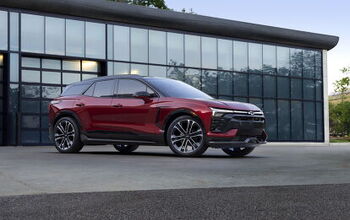

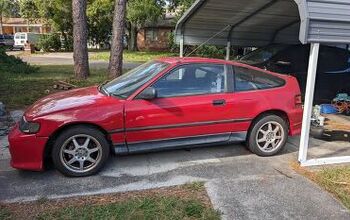



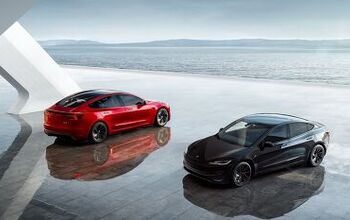



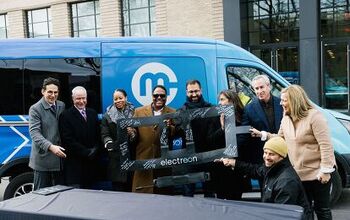

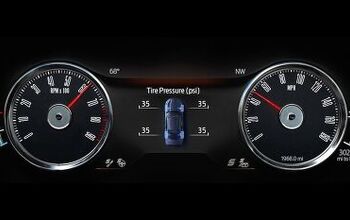
Comments
Join the conversation
Mikey, I don't know when they first installed it, but Buick had the gas pedal/starter as late as 1959 that I know of. In the late 80s I found a couple of little old ladies who were selling their '59 Invicta sedan and they had to tell me how to start it (they thought it was amusing I didn't know how). Yeah, I'm still kicking myself for not buying it. As I recall, some of the cars (or maybe all of them?) with the Wonder Bar radio came with a button on the floor so you could operate it with your foot.
# Jonny Lieberman: September 15th, 2006 at 3:11 pm All I want to come back: Kick-on brights. Thank you. My dad was driving a new car back for the dealership in Ohio (from oklahoma) that had been abandoned for a little over three months in a parking lot. He was doing 70 mph down a two lane stretch of blacktop, kicked on the brights, and the headlights cut out completely, no moon, no streetlights. When he finally dropped off the car back at the dealership, he told them "Yeah, you really need to fix that."